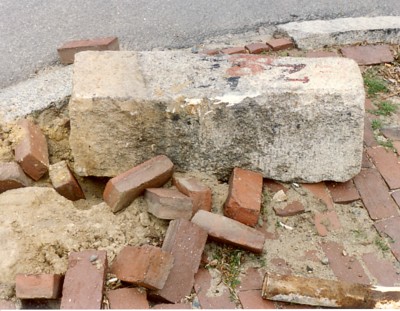

 |
 |
|
|
|
Boundary Markers |
|
Private property, town, and state boundaries have been marked by a wide variety of markers over the past 400 years. On this page is a small selection of New England boundary markers.
|
|
Private Property |
|
|
|
History of the State of Rhode Island and Providence Plantations, by Samuel Green Arnold (1860) vol. II , pp. 124. “Notice was sent to Massachusetts, that Rhode Island would proceed no farther in the attempt to obtain an amicable adjustment of the eastern boundary, but would await the royal commission. The marks and bounds set up on the western line, requiring renewal, a joint comittee of the two colonies had been apointed for the purpose three years before. The Connecticut men had failed to attend several appointments, and the Rhode Island committee therefore proceeded alone to renew the stone heaps and tree marks along the whole line, occupying six days in the work.” |
|
|
||||||||||||||||||||||||||||||||||||||||
|
Colonists and immigrants to New England brought over with them a long tradition of marking town and parish boundaries. One of those traditions was the renewal the town bounds. This involved a committe of men from each town along a common border, walking the bounds or town lines every so many years. This practice continues today and the dates of those boundary renewals are generally painted on each boundary marker. Many town boundary markers have one or dates spray painted on them. This not vandalism but rather a means to record that each boundary was actually visited. As the quotation from the History of Rhode Island (above) indicates, some committees failed to fulfill their obligations. |
|
|
||||||||||||||||||||
|
Two typical town boundary markers. Towns had a strong preference for quarried granite posts. Town boundaries had bare minimum have the initials of both towns carved into the post and many times include the date the markers was erected. Rowley & Ipswich markers dates from 1825. It was quarried locally using the flat wedge method. the Manchester & Essex markers dates from 1903 and is a commerically quarried granite post split using plug & feather method. |
 |
|||
|
Newbury & Newburyport, MA Boundary |
|||
|
Boundary markers are occassionally toppled by natural and man-made forces. This boundary on the busy High Street was struck by a car. |
|||
 |
|
|
|